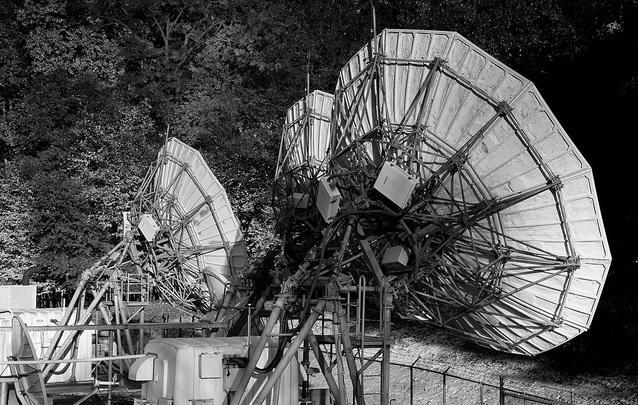 The media philosophy offered in this series is the belief that in the Media Age the more you give the more you make.
The media philosophy offered in this series is the belief that in the Media Age the more you give the more you make.
The continuous flow of honest news—good and bad—from the Australian Defence Force in the field doesn’t cut Canberra out of the action.
Truth-with-speed creates a solid basis of fact continuously flowing through all available digital channels. All the platforms become stages for government and Defence to do their part of the media job from Canberra.
As always, the role of the Prime Minister, Defence Minister and ADF Chiefs is to set out the grand strategy—what is these days called ‘the narrative’.
More than announce and explain, the job for those at the top is to argue, guide and convince. The day-to-day action must be related to Australia’s aims, the military purposes and the diplomatic endeavours.
What’s offered to the Australian voters is given simultaneously to Digital Citizens everywhere. This age demands it as a basic response but also rewards it as proper behaviour.
The communications power that billions of Digital Citizens will wield is just one example of the fluidity and creative destruction surging through the Age.
Responding to my previous discussion of the Digital Citizens and operational transparency, an old Canberra defencenik made this observation:
‘If the Digital Citizen is a resident of where we are conducting operations, they will be considered part of the problem – and dealt with accordingly – rather than part of the solution. We are not going to engage with them because they could be ISIS/Taliban/etc. If they are a professional journalist, then they are going to be fed a carefully structured view, so as to ensure that the ISIS/Taliban don’t get an operational advantage. So the only digital citizen that matters is our domestic digital citizen.’
See this as a reasonable statement of how Defence and the ADF think: them, us and there’s the dividing line.
Trouble is the Digital Citizens aren’t just part of the operating environment—they’re also players in the media environment. That reality is why I dubbed them Digital Citizens, reaching beyond existing usages such as ‘digital natives’ and ‘digital residents’.
Defence’s them-and-us line is well suited to the physical geography of the ADF operating among foreign ‘natives’ and ‘residents.’ Not so useful, though, in confronting the surging fluidities of the Media Age—and Digital Citizens who have both rights and instant communication capacity.
Lots of ideas about authority, influence and control—and definitely, command—are going to be digitally altered.
This series has offered the prime directives of truth-with-speed. Those directives demand the demarcation of media roles between the Minister, Defence officials and military chiefs in Canberra, and ADF officers—at every level—on operations.
The strategic corporal is to be joined by the Lieutenant who can speak and the Captain who can confirm and the Major who can explain, and so on up the line.
Here are some thoughts—and rules—that flow from the prime directives:
- Every element of the media must be served. Using every digital channel means treating journalists and Digital Citizens the same.
- All military commanders must have a media and information dimension in their operational plans. It worked for Napoleon and it still will.
- Train officers, NCOs and everyone in the field to operate in the Media Age. Get them to understand journalists aren’t monsters. Then train them to understand that today every Digital Citizen can report on their actions. The strategic corporal will constantly meet the strategic Digital Citizen. The corporal will have the gun but the Digital Citizen will have media clout.
- Instead of the ‘fog of war’, the Media Age offers digital clarity. More people will be able to see much more of what happens in conflict. The ability to conceal and censor recedes.
- Digital Citizens can outnumber the military and deploy more communications power. The new asymmetry reverses the old relationship where the military vastly outnumbered the journalists. The military will have less exclusive power over information and less ability to control information coming from the battlefield.
- Information can be delayed—rarely can it be withheld indefinitely. The short-term gains of delay, obfuscation or denial should be weighed against the longer-term cost to credibility and reputation when the facts leak or are revealed from elsewhere.
- Australia should allow the maximum number of journalists possible to cover ADF operations. Australians should know what the ADF is doing in the field and they should get much of that information from Australian reporters, not just official spokespeople.
The truth-with-speed motto treats the good and the bad equally. The defeats are detailed as fully as the wins. The snafus rank with the successes.
For any bureaucracy, that’s tough. For politicians, completely counterintuitive. The control instincts throb powerfully, yet recent history reveals it as a dangerous instinct.
Hiding stuff becomes a gamble instead of a judgement call. The next data dump could blow up all those secrets in a single moment.
Truth-with-speed is about what can be made to work in the Media Age. Applied consistently, truth-with-speed becomes a considerable soft-power weapon to convince your own people and inform others.
The reputation benefits will build because what Australia says can be believed.
For Defence, truth-with-speed matters greatly for the most important group of all: the men and women who wear the uniform and go into the field. They’re face-to-face with the reality. To hear their leaders telling the truth about that reality is an affirmation of what the Australian Defence Force is and what Australia means.

